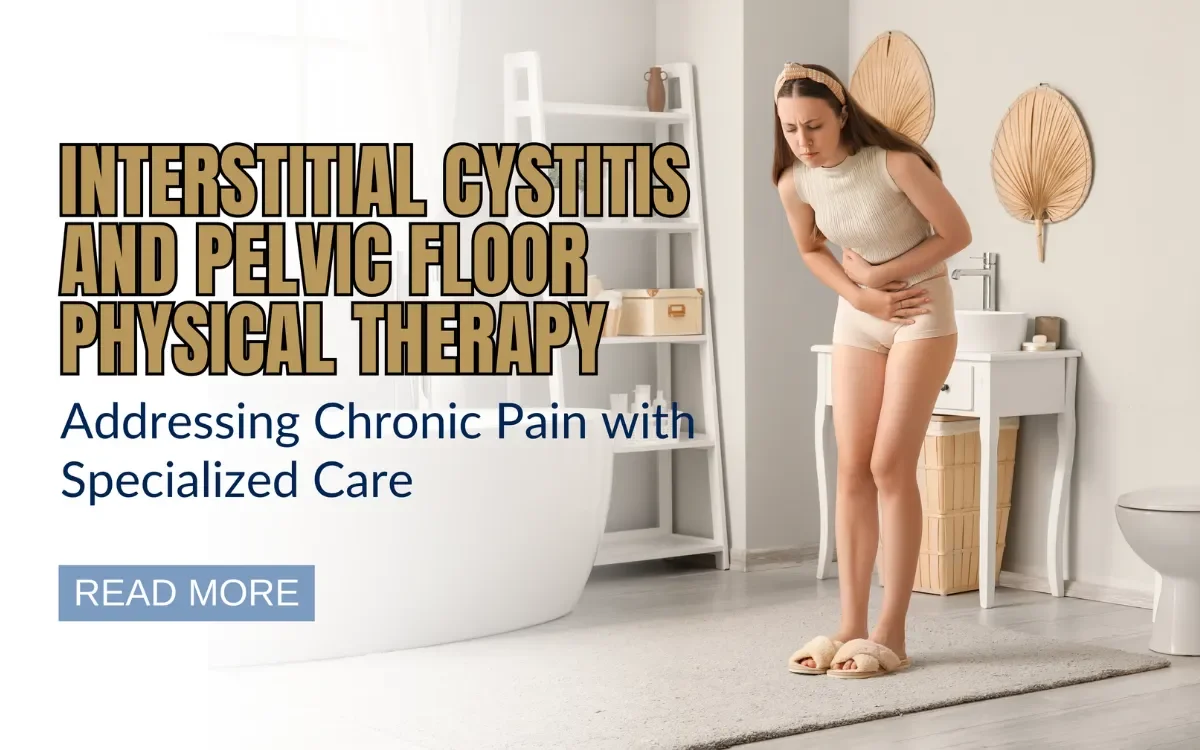Interstitial Cystitis and Pelvic Floor Physical Therapy
[et_pb_section fb_built="1" _builder_version="4.24.3" _module_preset="default" global_colors_info="{}" theme_builder_area="et_body_layout"][et_pb_row _builder_version="4.24.3" _module_preset="default" global_colors_info="{}" theme_builder_area="et_body_layout"][et_pb_column type="4_4" _builder_version="4.24.3" _module_preset="default" global_colors_info="{}" theme_builder_area="et_body_layout"][et_pb_text _builder_version="4.27.0" _module_preset="default" hover_enabled="0" global_colors_info="{}" theme_builder_area="et_body_layout" sticky_enabled="0"]
Interstitial Cystitis (IC) or Painful Bladder Syndrome (PBS) is considered to be a chronic overlapping pain condition. It is common, and affects up to 12 million people in the United States alone. The good news is, that it is treatable! A combination of appropriate medical management and pelvic floor physical therapy can provide effective treatment of IC/PBS and its symptoms.
Symptoms of IC/PBS can include, but are not limited to:
- Urinary urgency
- Urinary frequency
- Pain with urination in the absence of an infection
- Lower abdominal pressure located between the umbilicus and pubic bone
- Pain upon bladder filling or the sensation of bladder filling
- Pain or pressure following bladder emptying
If you are experiencing pain with urination, your medical provider will likely include a urinalysis in your testing to rule in or rule out a bladder or urinary tract infection. In addition, if you are experiencing pain or are aware of your bladder filling, it is important to note that this is not a sensation we should be aware of under normal circumstances. Many symptoms exist under the term of interstitial cystitis, and some people may experience all of the symptoms, while others may experience various combinations of the symptoms. In addition, symptoms can be consistent or intermittent.
Let’s continue to breakdown some of the symptoms that may occur as a result of IC/PBS:
- Painful sex
- Dyspareunia, or painful sex, may occur with penetrative forms of intercourse in those with IC/PBS.
- This can occur as superficial pain close to the vaginal opening and urethra, or it may occur as deep pain.
- It can also present as vaginal burning or increased urinary urgency during or after intercourse.
- Painful orgasm
-
- An orgasm includes a rapid contraction of the pelvic floor muscles.
- Many people with IC/PBS also experience pelvic floor dysfunction which may include painful or overactive muscles, and can result in pain with orgasm.
- Generalized pelvic pain
- Many of those with IC/PBS may also experience vulvodynia/vestibulodynia, endometriosis, fibromyalgia, TMJ dysfunction, and migraines.
- These can be linked with pelvic floor dysfunction and pain as well. ○ There is also a subset of IC that includes body-wide pain, which can include unprovoked pelvic and abdominal pain.
- Nocturia
- Nocturia is nighttime urination.
- Anyone under the age of 35 should ideally not be waking at night to urinate.
- In some cases, it can be normal to wake up to urinate up to once per night.
- However, if urgency is causing someone to wake up during the night, it can be indicative of pelvic floor dysfunction and is also a sign of possible IC
If you are experiencing any of the symptoms mentioned above, reach out to your medical provider for further assessment. Pelvic floor physical therapy is an evidence-based treatment for IC, and is recommended by the American Urological Association as a first-line treatment. Reach out to schedule with one of our pelvic floor physical therapists today! Let’s get you back to living a life unlimited by pain!
In Health,
The Team at Treasure Valley Pelvic Health
[/et_pb_text][/et_pb_column][/et_pb_row][/et_pb_section]

